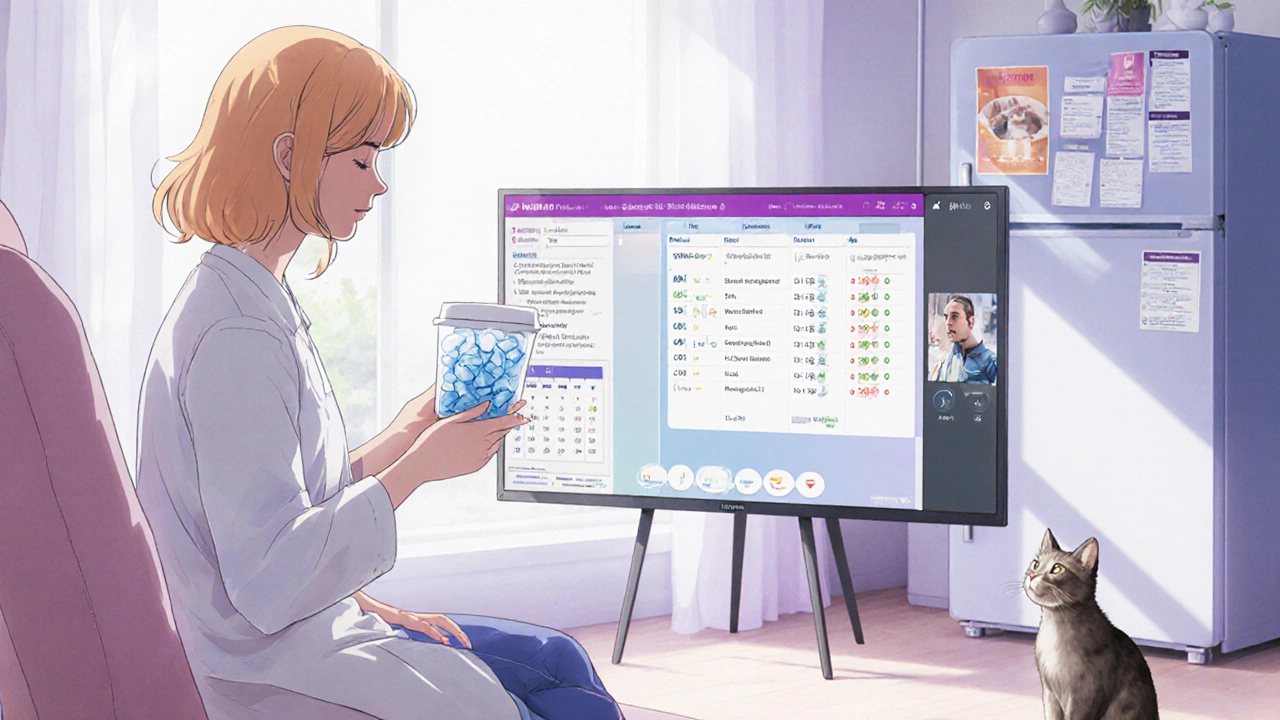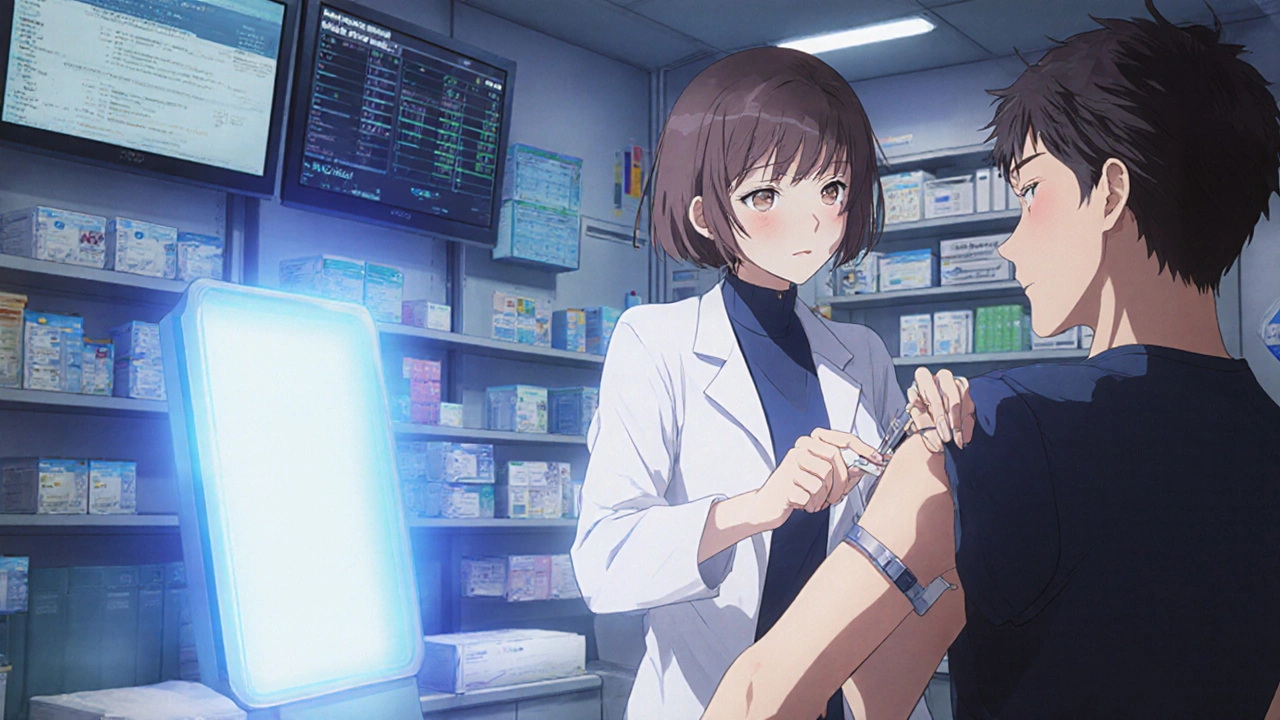When a patient gets a generic version of a specialty drug, many assume it’s just like picking up a regular pill at the corner pharmacy. But that’s not how it works. Even when the drug is no longer brand-name, the process doesn’t simplify. It gets more complex - and that’s where specialty pharmacies and their providers step in.
What Makes a Drug ‘Specialty’ - Even When It’s Generic?
Specialty drugs aren’t defined by price alone. They’re defined by complexity. These are medications that need special handling, storage, or administration. Think injectables, infusions, or pills that require strict temperature control. Many treat chronic, serious conditions like rheumatoid arthritis, multiple sclerosis, or cancer.
Even when a generic version becomes available, it doesn’t suddenly become a standard prescription. Why? Because the drug’s delivery system - not its label - determines how it’s dispensed. If the manufacturer requires distribution through a specialty pharmacy, then generic or not, the drug must go through that channel. Retail pharmacies can’t touch it.
This isn’t about profit. It’s about safety. These drugs often come with Risk Evaluation and Mitigation Strategies (REMS) from the FDA. That means patients need training on how to self-administer, regular lab monitoring, and immediate access to clinical support if side effects occur. A generic methotrexate tablet for rheumatoid arthritis might cost $20 at Walgreens - but if it’s part of a REMS program, it can only be filled by a specialty pharmacy, even if it’s the exact same chemical.
The Provider’s Role: More Than Just Filling a Prescription
Specialty pharmacy providers aren’t just pharmacists handing out pills. They’re care coordinators, educators, and case managers rolled into one. When a patient gets a generic specialty drug, the provider’s job doesn’t shrink - it expands.
Here’s what they actually do:
- Verify the prescription and confirm insurance coverage - often involving prior authorization that can take days.
- Coordinate financial assistance programs. Even generics can cost hundreds per month. Providers help patients apply for copay assistance or manufacturer discounts.
- Conduct clinical intake. A pharmacist calls the patient to review their medical history, current meds, and potential interactions.
- Train patients on how to use the drug. This could mean teaching someone to inject themselves, use an infusion pump, or store the drug properly in a refrigerator.
- Monitor for side effects. Providers check in weekly or biweekly. They track lab results and alert the prescriber if something’s off.
- Arrange delivery. Medications are shipped in temperature-controlled packaging, often with overnight service.
One patient told a Reddit thread: “My generic version of Xeljanz still comes through the same specialty pharmacy with the same nurse follow-ups, which I actually appreciate because she knows my case history.” That’s the point. The continuity matters more than the brand name.
Why Can’t Retail Pharmacies Handle Generic Specialty Drugs?
It’s not that retail pharmacies can’t handle generics. They do it every day. But specialty drugs come with conditions that retail systems weren’t built for.
Take storage. Many specialty drugs - even generics - must be kept between 2°C and 8°C. Retail pharmacies don’t have the cold chain infrastructure. They don’t have the software to track REMS compliance. They don’t have the staff trained to manage patients on biologics or immunosuppressants.
Also, manufacturers control distribution. Even if a generic is chemically identical, the manufacturer may restrict distribution to specialty pharmacies to ensure patient safety and adherence. This is called a “mandated distribution program.” It’s legal. It’s common. And it applies equally to brand and generic versions.
As industry analyst John Prince put it: “The distinction between brand and generic becomes almost irrelevant in specialty pharmacy because the service model - not the product cost - determines the distribution channel.”

Turnaround Time and Patient Experience
Patients often complain about delays. A specialty pharmacy takes an average of 7.2 days to get a prescription filled and delivered. Retail? About 1.2 days.
Why the gap? It’s not inefficiency. It’s complexity. Each prescription requires:
- Insurance verification (often multiple calls to payers)
- Prior authorization (sometimes needing doctor re-submissions)
- Financial assistance processing
- Patient education scheduling
- Special packaging and shipping
Some patients see this as a hassle. Others see it as lifesaving. A 2024 survey on MyHealthTeams found 68% of patients preferred staying with the same specialty pharmacy when switching from brand to generic. Why? Because they trusted the team. They knew who to call. They didn’t have to re-explain their condition.
But delivery delays remain a top complaint. Trustpilot ratings for specialty pharmacies average 3.8/5, with delivery speed scoring just 3.1/5. To fix this, many pharmacies now use Real-Time Prescription Benefit (RTPB) technology. It cuts prior authorization time by over three days on average - a major win for patients waiting to start treatment.
Biosimilars Are Changing the Game
True generic versions of biologic drugs don’t exist. Instead, we have biosimilars - highly similar, but not identical, versions. These are now the fastest-growing segment in specialty pharmacy.
Since 2024, CMS rules require Medicare Part D plans to cover all FDA-approved biosimilars. That means more patients will be getting these lower-cost alternatives - but still through specialty pharmacies.
Providers are preparing for a 40% increase in biosimilar volume by 2026. That means more training, more software upgrades, and more coordination with prescribers. The goal? Keep the same high-touch model, just with a cheaper drug.
It’s not about replacing brand drugs. It’s about making complex care more affordable - without losing the support system patients rely on.
The Bigger Picture: Consolidation and Competition
The specialty pharmacy market is dominated by three giants: OptumRx, CVS Specialty, and Express Scripts. Together, they control over 80% of the market. But health systems are pushing back.
63% of hospitals and health systems now plan to build or expand their own in-house specialty pharmacies. Why? To control costs, reduce fragmentation, and keep patient data within their own systems.
This creates tension. If a patient gets a generic specialty drug from their hospital’s pharmacy, does it still count as “specialty”? Yes - because the drug’s requirements haven’t changed. The care model hasn’t changed. Only the name on the label has.
Meanwhile, companies like Walgreens are buying up regional specialty pharmacies to compete. The message is clear: specialty pharmacy isn’t going away. It’s evolving.
What This Means for Providers and Patients
For providers - whether they’re doctors, nurses, or pharmacists - the key is understanding that generic doesn’t mean simple. The same level of clinical oversight, education, and monitoring is required. If you switch a patient to a generic specialty drug, don’t assume the process gets easier. It might get harder - because now you’re managing cost savings on top of complex care.
For patients, the takeaway is this: if your generic specialty drug is coming through a specialty pharmacy, it’s not a mistake. It’s by design. You’re not being overcharged. You’re being supported.
The real issue isn’t whether the drug is generic. It’s whether the system works. And right now, specialty pharmacies are the only system equipped to handle these drugs - brand or not - safely, consistently, and with the human touch patients need.
As Cheryl Allen, a pharmacy leader, said: “It’s way more than ‘ding-dong, here’s your pills.’ There are patient care coordinators, nurses, and pharmacists working with these patients.” That’s the value. And it’s not going away - even when the price drops.


Been working in this space for 12 years. The myth that generics = simple is dangerous. I’ve seen patients stop meds because they thought ‘it’s just a pill now’ and skipped the training. Big mistake. The cold chain, the lab monitoring, the nurse calls - none of that disappears. The drug’s chemistry changed, not the risk profile.